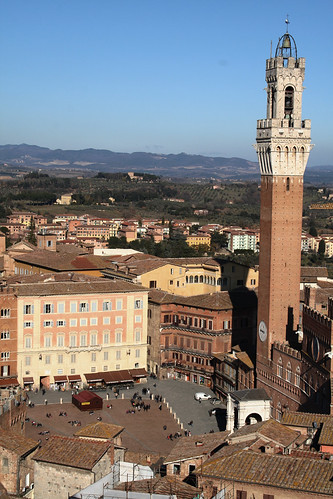
Torre del Mangia, seen in the above photo from a viewpoint atop the nearby Duomo, was the tallest secular tower in Italy when it was built, overlooking Piazza del Campo from the Palazzo Pubblico. It was named for Giovanni di Balduccio, whose nickname, “Mangiaguadagni,” more or less meant “he eats his paychecks” and referred to his love of expensive food. (He and I have something in common.) The tower is visible from almost all of Siena, and was designed to be the same height as the belltower of the Duomo, symbolizing the equal power of the church and the secular government in the medieval Senese republic.
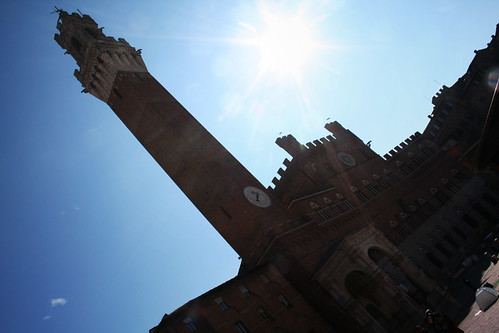
The tower is 330 feet tall and provides an astounding view of the city, the Piazza, and the surrounding countryside. From it, you can identify three other “high points” of this hilly Tuscan town: the Duomo, the church of San Domenico, and (difficult to see in the below photo, but look just behind San Domenico's belltower in the far right) Fortezza Medicea.
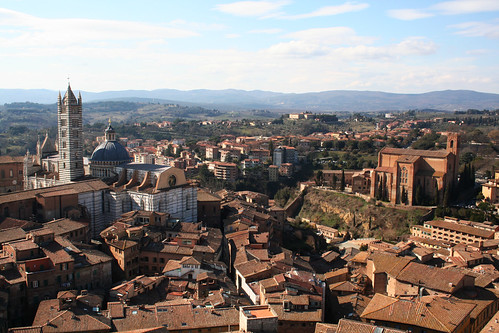
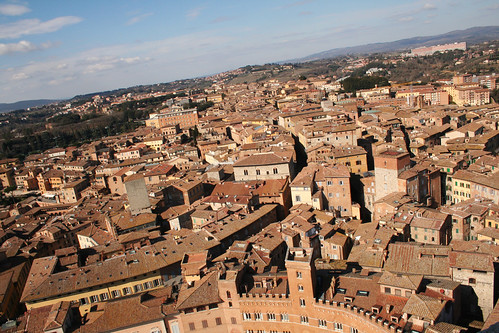
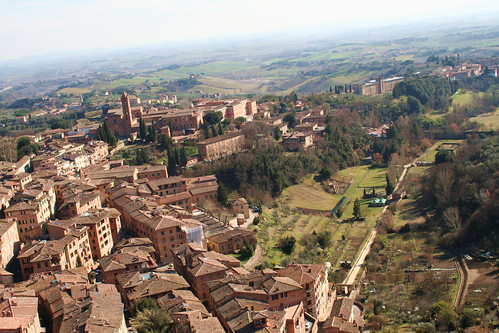
The lower levels of the tower have windows overlooking the Piazza, making it an excellent place to watch the milling crowds on a sunny afternoon, or the preparations for Carnevale if you happen to be there on Fat Tuesday...
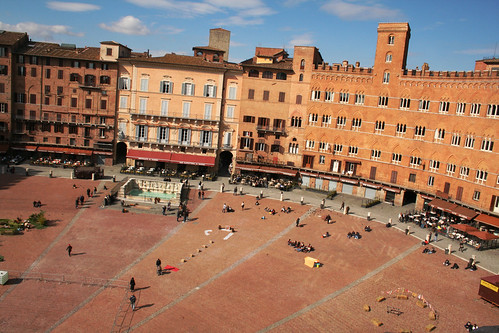
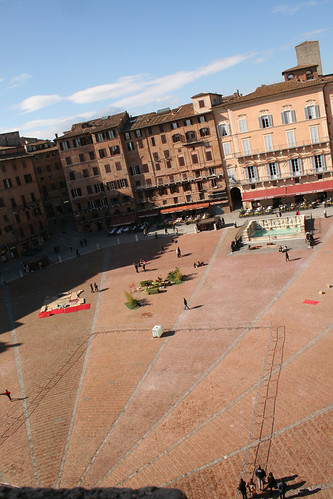
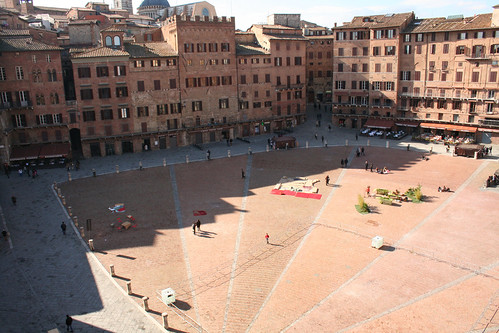
The Palazzo Pubblico, seat of the government of the republic for hundreds of years and now a museum and theatre, still sports the symbols of Siena's medieval independence from nearby Florence and the Papal armies: the black and white crests of the city, and the water spouts in the form of snarling wolves (Siena's symbol is la lupa who nursed Romulus and Remus, the legendary founders of Rome). When Siena was finally conquered by Florence around 1560, the Medici family coat of arms was added to the building's façade, topped by fearsome metal crowns.

The white marble structure at the base of the tower is a chapel, built by the survivors of the Black Death in 1348; today, it is used to bless the participants of the Palio, a twice-annual horse race around the Piazza. (For more on the Palio, see my entry from last year's Siena day trip.)
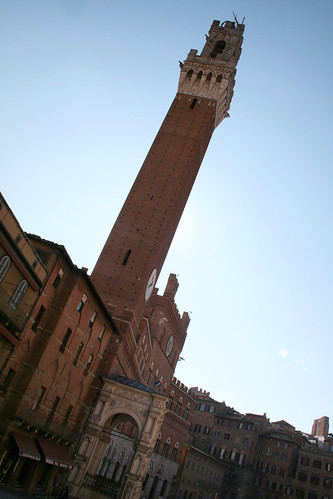
Any of the caffeterie or ristoranti around the Piazza give you a great vantage point for people-watching in the afternoon, and the prices, while somewhat inflated due to the location, aren't nearly as bad as in places like Piazza San Marco in Venice or near the Vatican in Rome. The food is nothing to scoff at, either. A good Senese specialty, well-represented in the historic center, is pici, a type of thick, round noodle that is satisfying and chewy. You can also find lots of typical Tuscan secondi such as coniglio (rabbit) and cinghiale (wild boar).
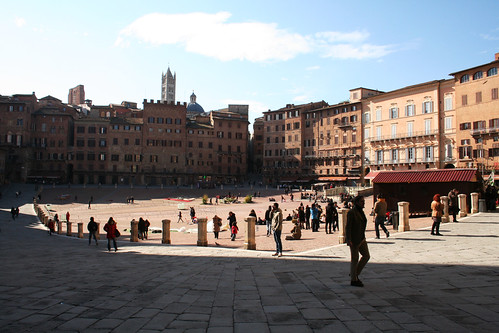
The day wore on and Piazza del Campo began to fill with people in anticipation of Carnevale. I didn't stick around, since the festivities were mostly oriented towards children and I was getting tired of the crowds, and instead took a walk towards San Domenico.
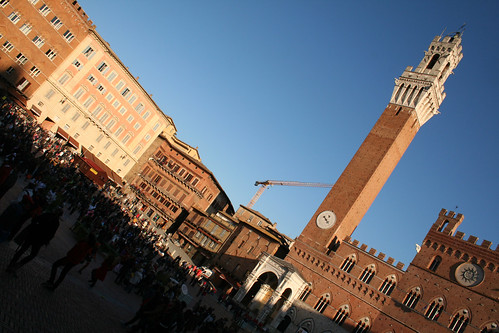

On deck: Fortezza Medicea and Siena's striking Duomo.

No comments:
Post a Comment